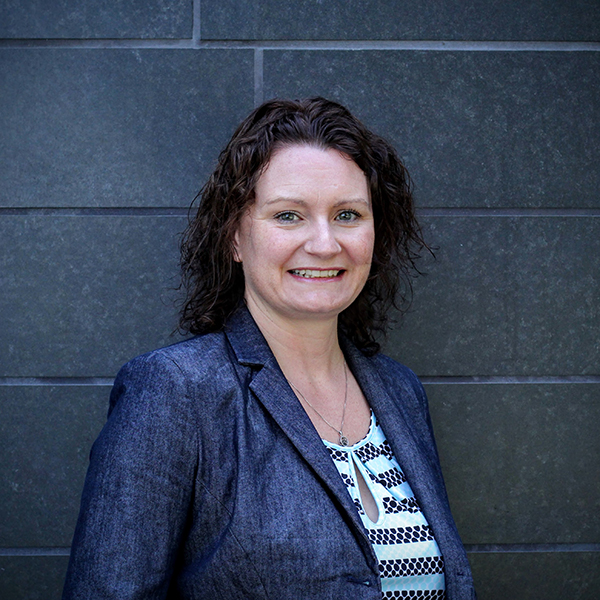
Scientist Amy Ryan has never lived according to a fixed plan. Instead, she has followed where life has led her—to a position as an assistant professor of medicine and stem cell biology and regenerative medicine at USC, studying lung diseases ranging from cystic fibrosis to COVID-19.
Ryan’s original plan had little to do with lung disease. She grew up on a farm in a small village near the Yorkshire moors in England. She always loved animals: in addition to helping look after sheep on her family farm, she volunteered in a vet’s office and competitively rode horses. Despite this highly relevant experience and her strong academic record, when she applied to universities to study veterinary science, she wasn’t accepted.
“Honestly, I didn’t see what else I could do to get in,” she said. “I didn’t want to put all my eggs into that basket. I wanted to go to university.”
A friend told her about an interesting pharmacology program at the University of Bath, so she applied, was accepted, and became the first person in her immediate family to attend college. She enjoyed her time at Bath, joining the university riding team, serving on student council, and working part-time in food service at a night club. During her third year, as part of her studies, she had the opportunity to work at Novartis Pharmaceuticals in Basel, Switzerland, in an immunology-based arthritis lab. The following year, she returned to Bath and received her introduction to lung biology in an electrophysiology lab that studied the pulmonary artery, which carries deoxygenated blood from the heart to the lungs.
“The professor I was working for, Dr. Smirnov, offered me a PhD,” said Ryan. “I hadn’t really planned it. I hadn’t thought about my next steps. But I really enjoyed what I was doing, so I accepted and stayed and completed my three-year PhD.”
For her postdoctoral training, Ryan wanted to continue her studies of pulmonary hypertension, but to work with specimens from actual patients. So she moved to the United States to join the laboratory of Jason Yuan at the University of California, San Diego. At the time, the state’s voters had recently approved ballot proposition 71, which allocated $3 billion in public funding for stem cell research through the California Institute for Regenerative Medicine (CIRM). So although Ryan hadn’t initially planned to study stem cells, she decided to apply for a CIRM fellowship, which she received.
When the Yuan Lab moved to Chicago, Ryan decided to stay in San Diego and learn even more about stem cells by continuing her postdoctoral training in Inder Verma’s lab at the Salk Institute for Biological Studies.
“His lab had expertise in techniques that I had no experience in: viral vectors and cloning and genetic manipulation and mouse models,” said Ryan. “I figured it was a good opportunity for me to learn techniques and to continue to work on stem cells.”
Ryan started by working with stem cells derived from patients with Severe Combined Immunodeficiency (SCID). She then rekindled her interest in lung biology when she had the opportunity to work with stem cells derived from patients with cystic fibrosis, an inherited and often fatal disease. Ryan used these patient-derived stem cells to generate the cells that form the airway, and then to correct a mutation that commonly causes cystic fibrosis.
As a postdoctoral trainee, Ryan also co-edited a book on lung stem cells, which led her to connect with various leaders in the field. One of these experts was Zea Borok, director of the USC Hastings Center for Pulmonary Research, who ended up offering Ryan a faculty position.
In 2016, Ryan started her USC laboratory, which creates stem cell-based models to understand the molecular and genetic underpinnings of lung development, disease and repair, and to explore the potential for cell therapies or tissue regeneration of the airways.
The lab primarily focuses on two rare but serious genetic lung disease: cystic fibrosis and primary ciliary dyskinesia. Affecting 30,000 people in the U.S., cystic fibrosis is usually diagnosed at birth, causing the lungs to fill with mucous, leading to serious infections and interfering with breathing. An additional 3,000 Americans have primary ciliary dyskinesia, which causes immobility in the small hairlike extensions known as cilia that line the lungs and other organs, leading to respiratory infections, infertility and even more severe symptoms.
To address these and other diseases, the Ryan Lab has worked collaboratively to pioneer the “human Airway Lung-Chip,” which enables the study of human airway cells in combination with blood vessels and blood flow—key aspects of lung physiology.
More recently, these lab-grown models of the lung have proven useful in studying COVID-19. The lab has embarked on several new collaborations to identify genetic risk factors for severe COVID-19 infections, to detail how the virus affects lung cells including those of the airway, and to understand how to modulate the maladaptive immune response known as the “cytokine storm.”
“It’s one of my flaws in research: I try to do too much sometimes,” said Ryan. “The lab produces data, which then stimulates increasingly more great questions about all the different aspects of what we do, and we can’t answer them all. So whenever we can, we get involved in collaborative research opportunities. That to me is always super exciting.”
